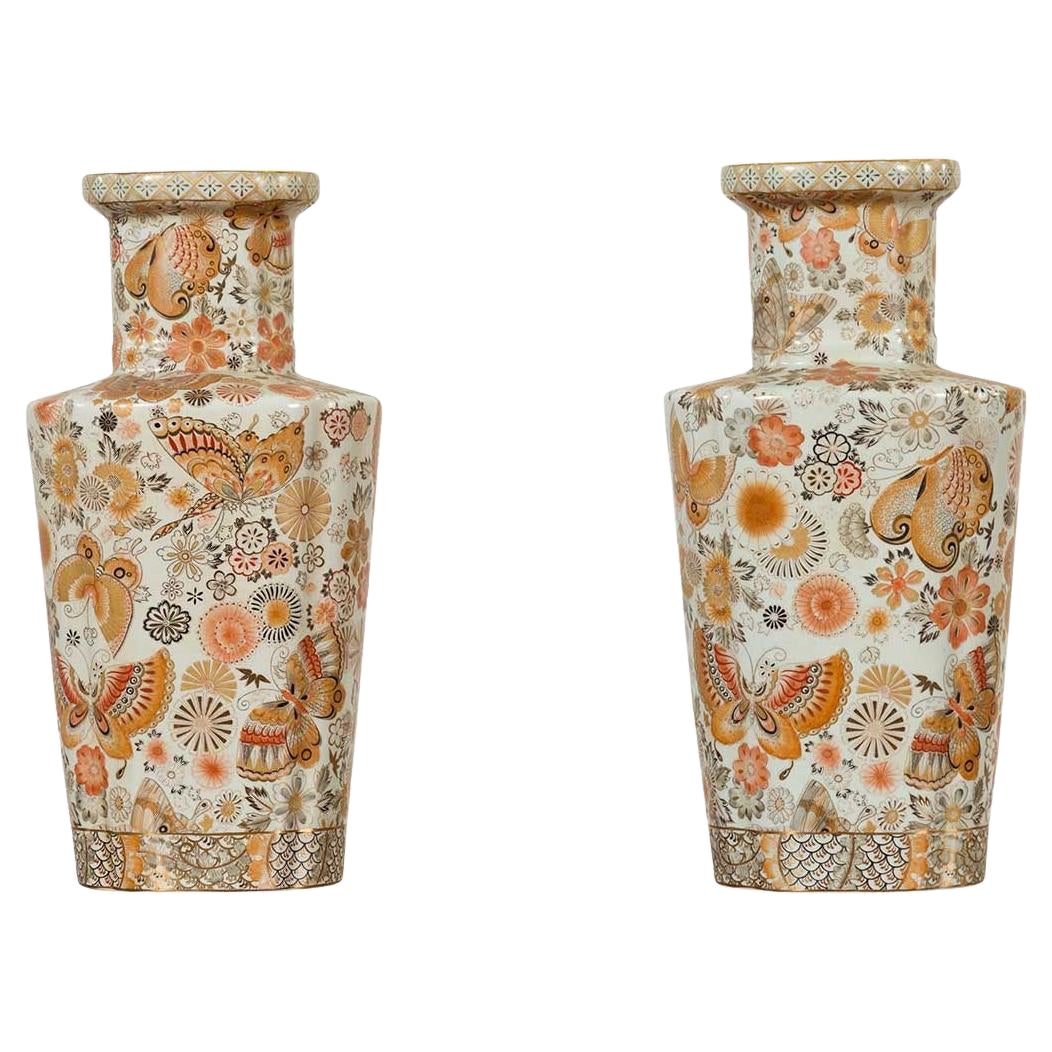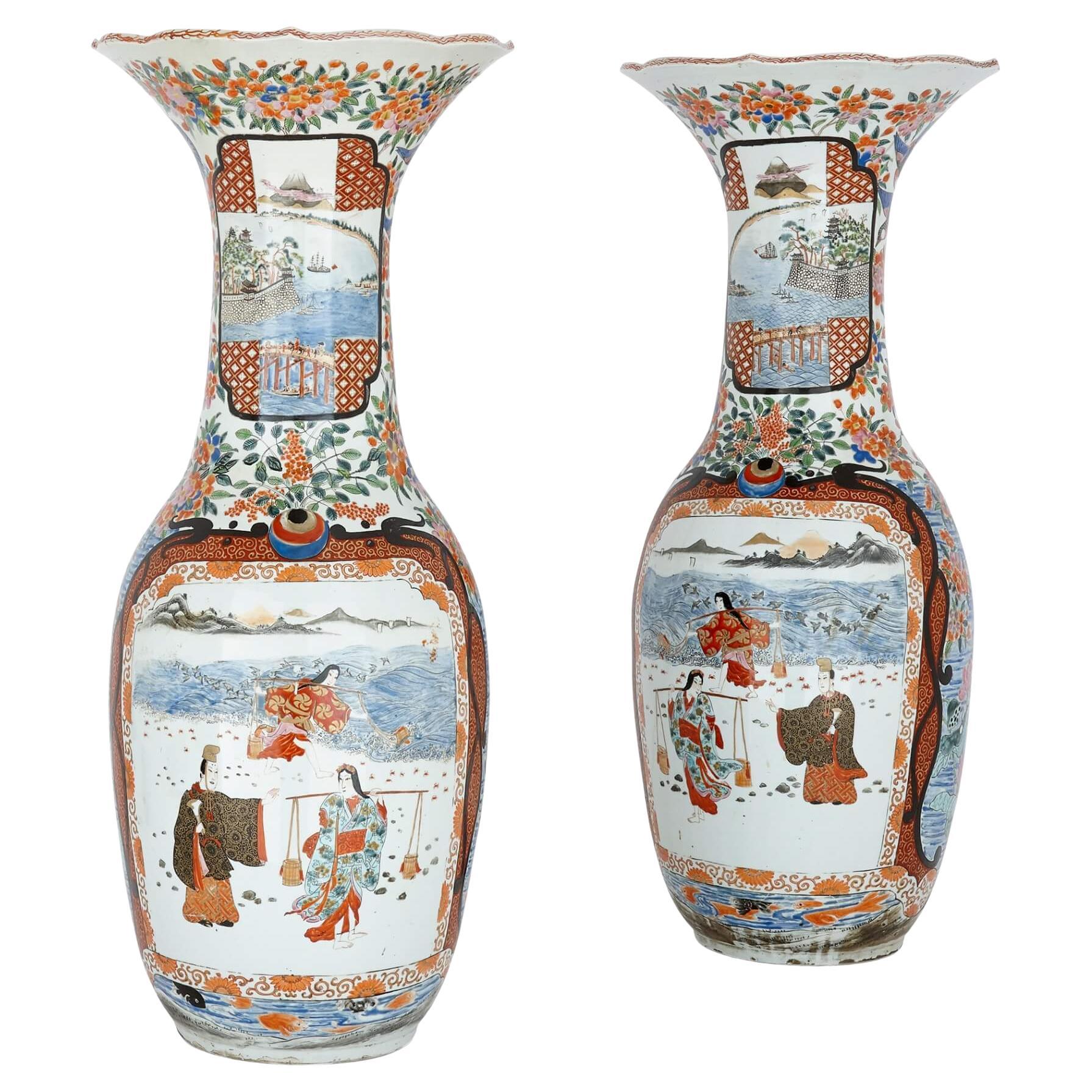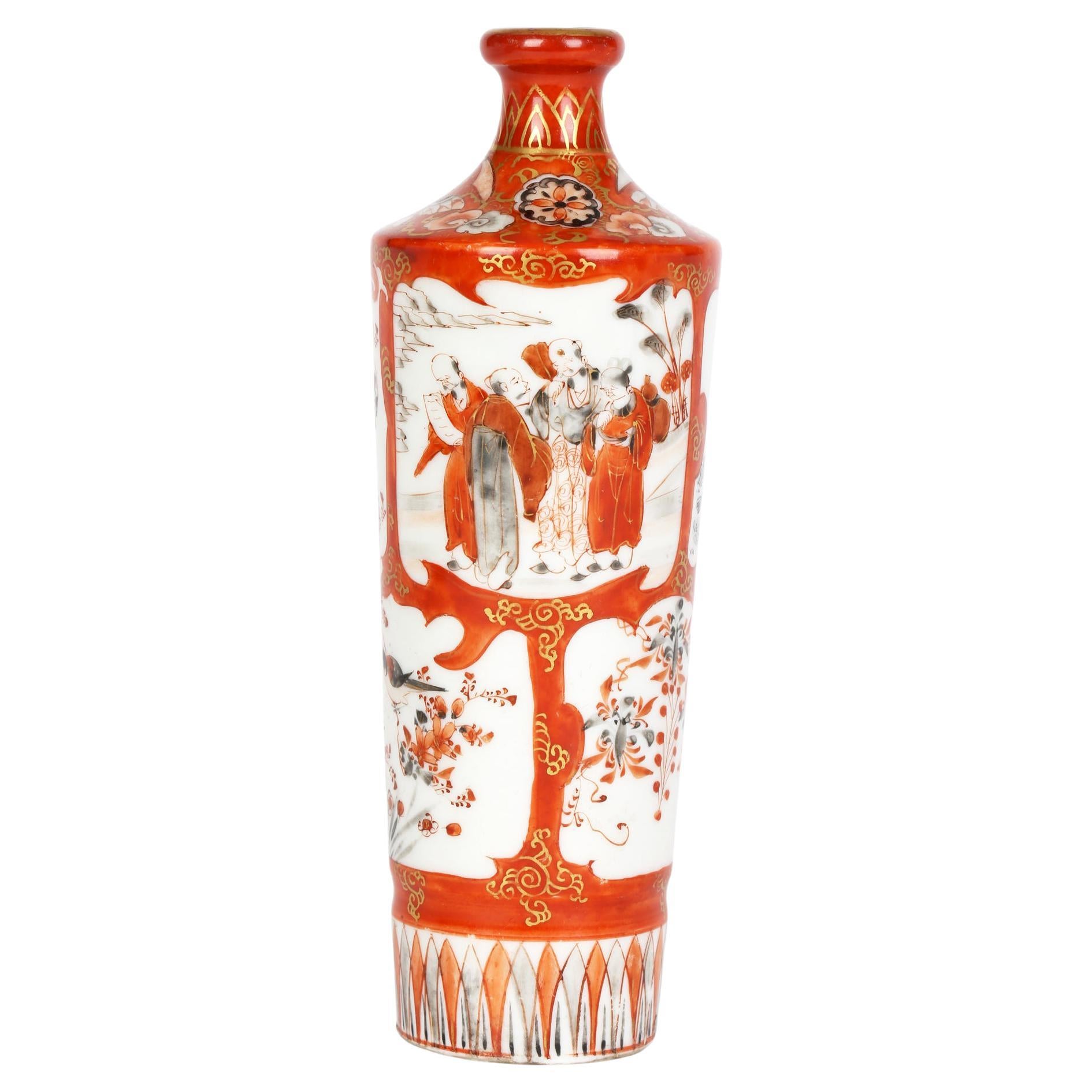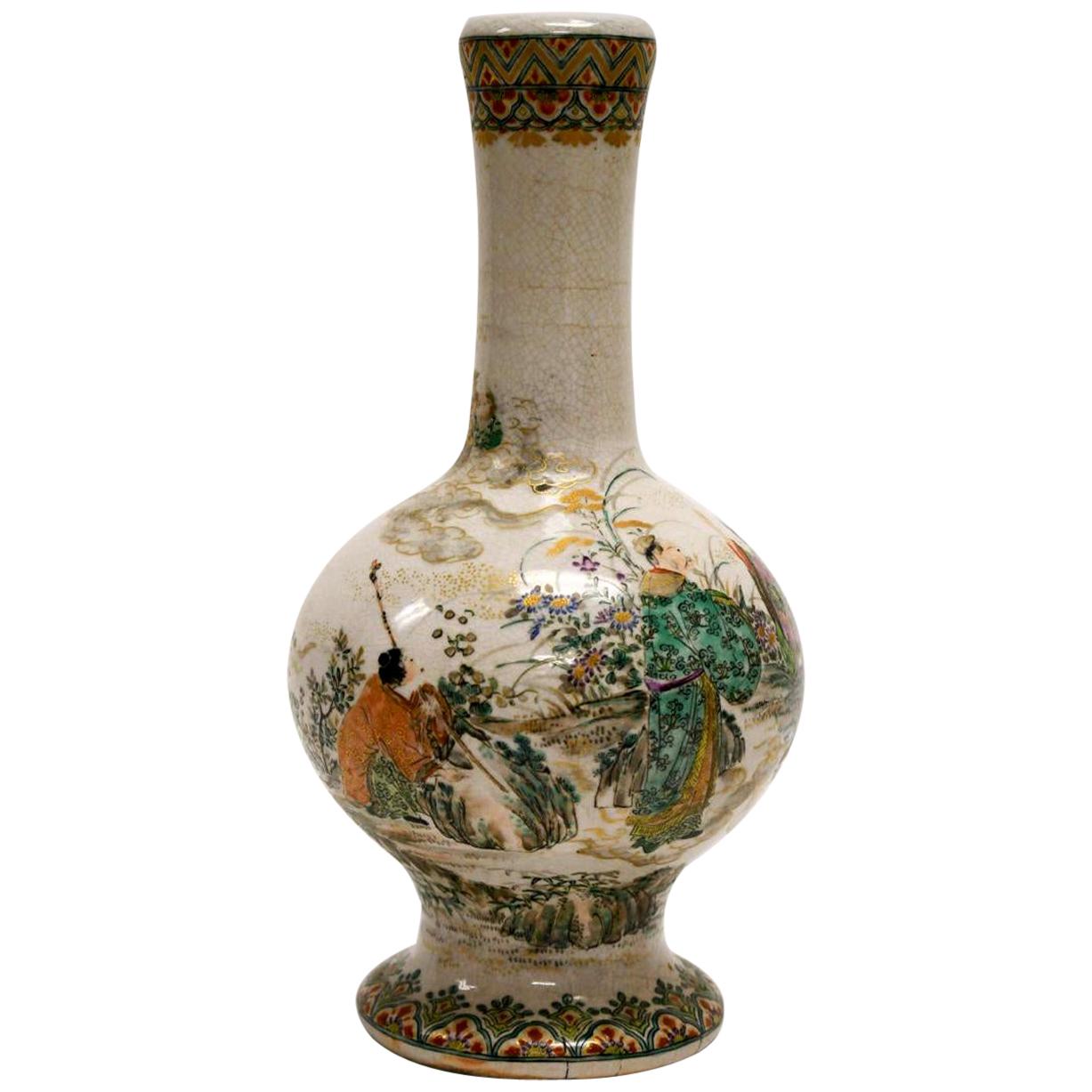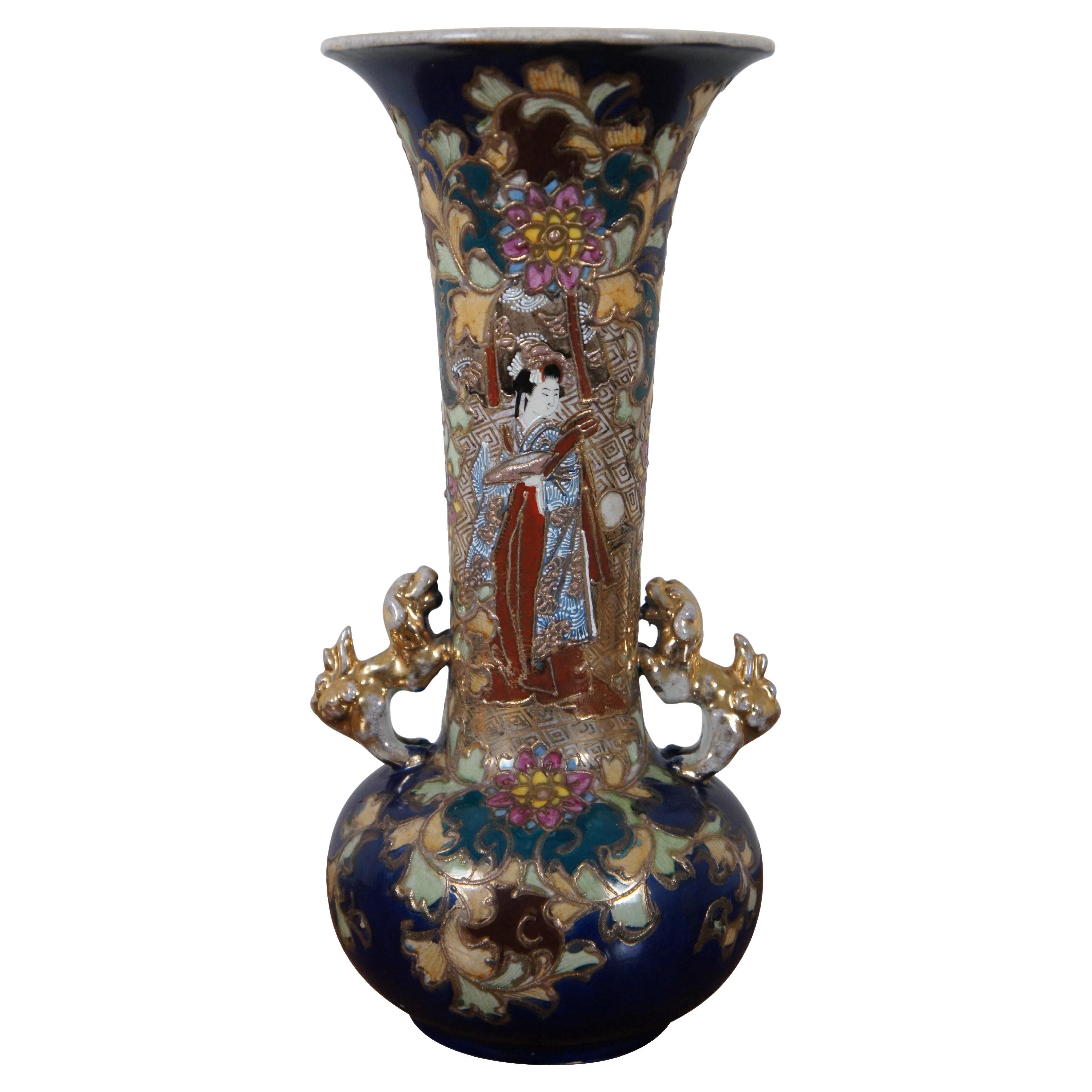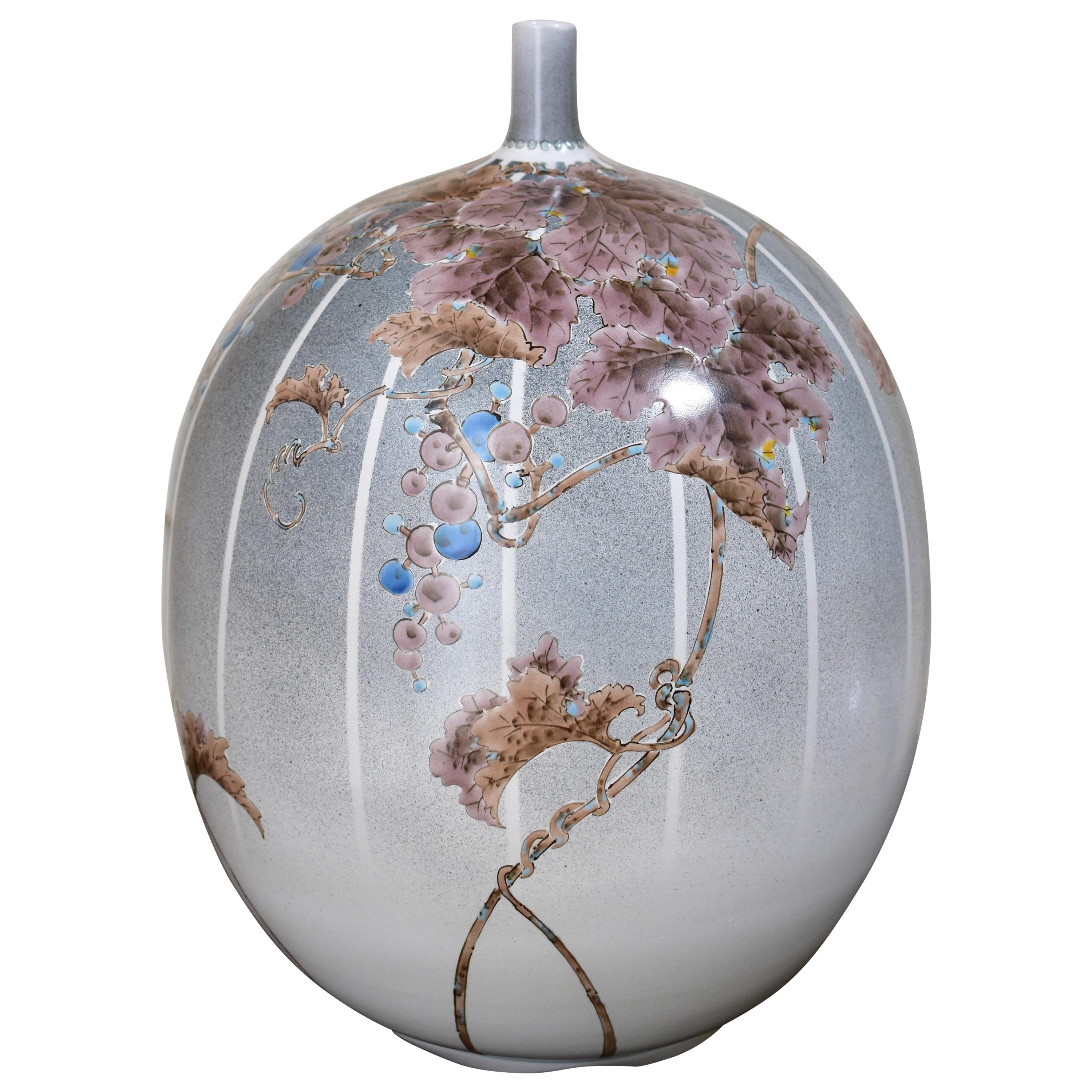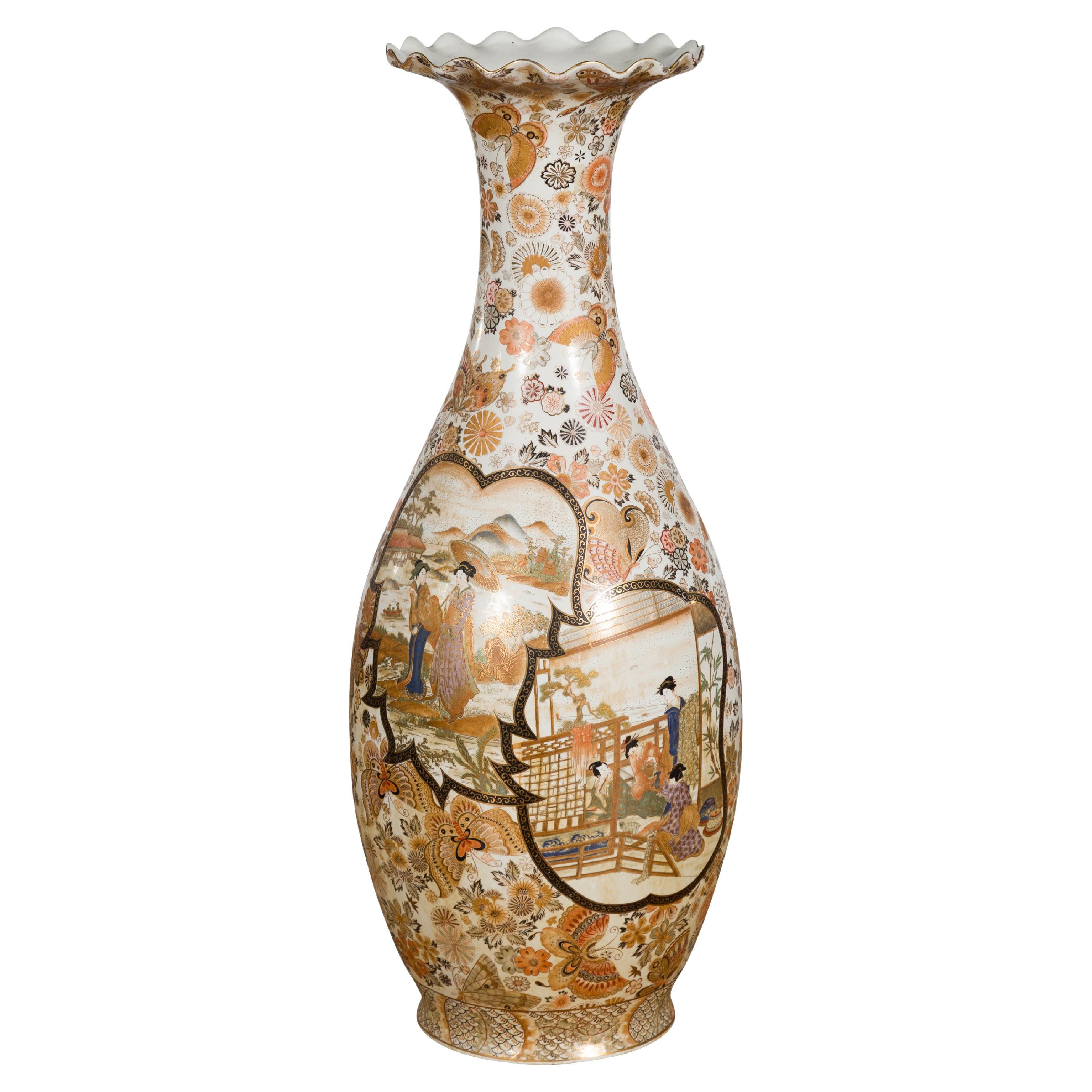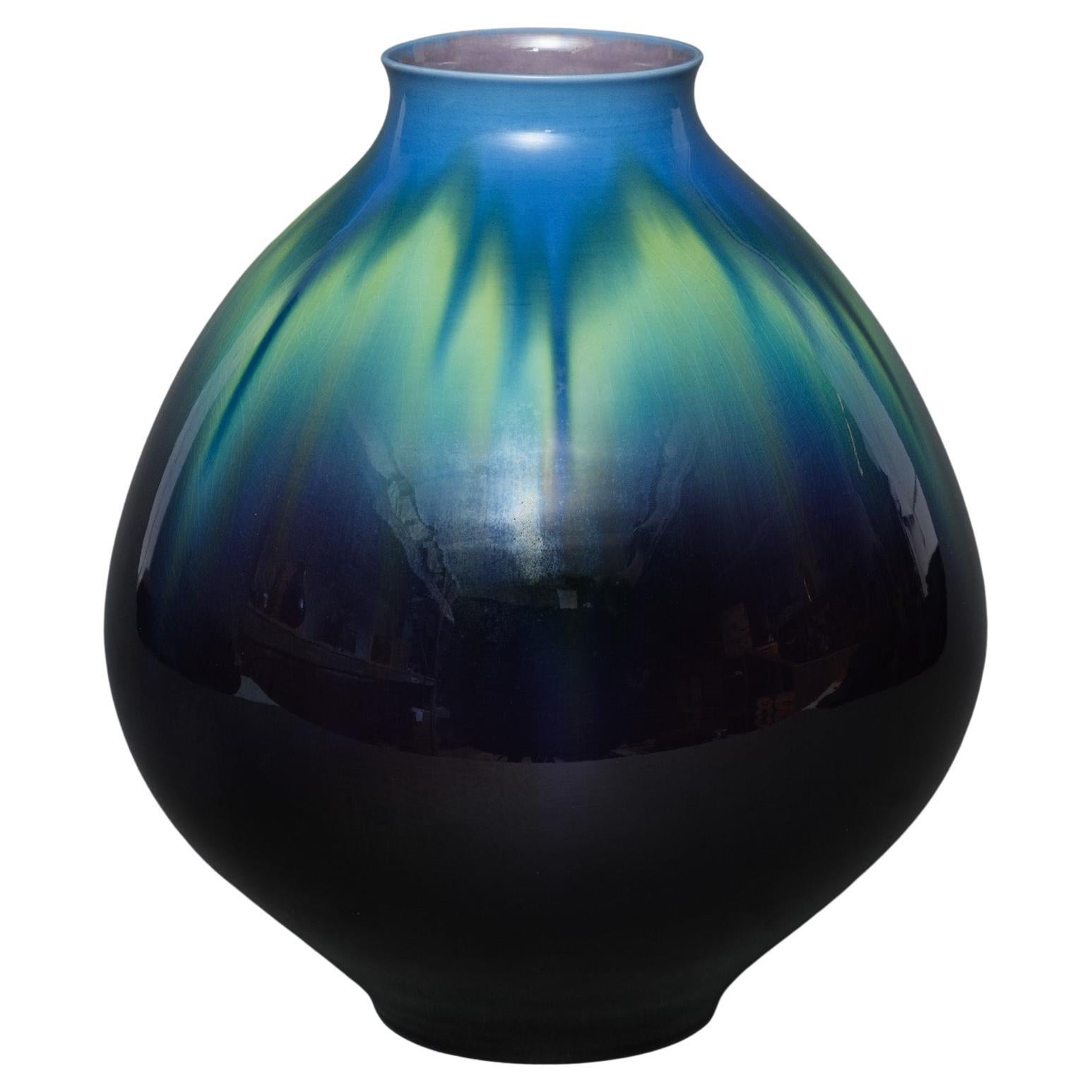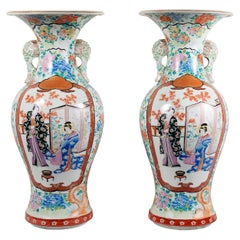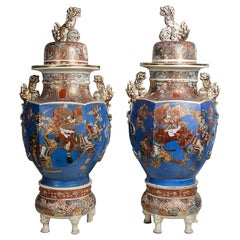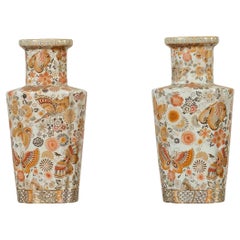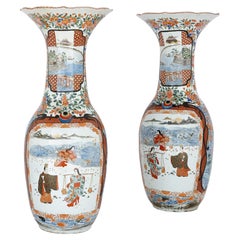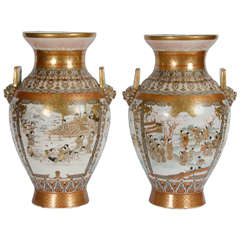
Pair of Antique Japanese Kutani Vases
View Similar Items
Want more images or videos?
Request additional images or videos from the seller
1 of 11
Pair of Antique Japanese Kutani Vases
About the Item
- Dimensions:Height: 24.5 in (62.23 cm)Width: 15.5 in (39.37 cm)Depth: 15.5 in (39.37 cm)
- Sold As:Set of 2
- Style:Japonisme (Of the Period)
- Materials and Techniques:
- Place of Origin:
- Period:1900-1909
- Date of Manufacture:1900
- Condition:
- Seller Location:Brighton, GB
- Reference Number:1stDibs: 1503311227230
About the Seller
5.0
Platinum Seller
These expertly vetted sellers are 1stDibs' most experienced sellers and are rated highest by our customers.
1stDibs seller since 2015
433 sales on 1stDibs
Typical response time: 1 hour
Associations
LAPADA - The Association of Arts & Antiques Dealers
More From This SellerView All
- Pair of Japanese Kutani Porcelain Vase, circa 1880By Kutani StudioLocated in Brighton, SussexAn impressive and very decorative pair of Meiji period (1868-1912) Japanese Kutani porcelain vases, each with wonderful exotic floral d...Category
Antique Late 19th Century Japanese Japonisme Ceramics
MaterialsPorcelain
- Large Pair of circa 19th Century Japanese Kutani Porcelain VasesLocated in Brighton, SussexA magnificent pair of Japanese Meiji period (1868-1912) Kutani porcelain vases. Having wonderful hand painted images of attendants gathering in morning, having classical motif decora...Category
Antique Late 19th Century Japanese Japonisme Ceramics
MaterialsPorcelain
- Pair of Large 19th Century Satsuma Lidded Vases, circa 1890Located in Brighton, SussexA very impressive pair of Japanese Meiji period (1868-1912) Satsuma lidded Koros (Vases) Each with a bold turquoise ground, classical gilded decoration,...Category
Antique Late 19th Century Japanese Japonisme Ceramics
MaterialsEarthenware
- Large 19th Century Japanese Kutani VaseLocated in Brighton, SussexA wonderfully decorative Japanese Kutani vase, Meiji period 1868-1912. Having the classical orange ground with scrolling foliate decoration, inset...Category
Antique Late 19th Century Japanese Japonisme Vases
MaterialsPorcelain
- Large Pair Japanese Kutani Vases, circa 1900Located in Brighton, SussexA large and impressive pair of Japanese Meiji period (1868-1912) Katani porcelain vases, each with wonderful hand painted scenes of tribes of Samurai warriors inset among boarders of...Category
Early 20th Century Japanese Vases
MaterialsPorcelain
$25,332 / set - Large Pair Meiji Period Japanese Kutani VasesLocated in Brighton, SussexA very decorative and impressive Meiji period (1868-1912) Japanese Kutani flare necked twin handle vases. Each with orange ground feather decoration, inset painted panels with blosso...Category
Antique 19th Century Japanese Vases
MaterialsPorcelain
$4,813 / set
You May Also Like
- Pair of 19th Century Japanese Porcelain Kutani VasesLocated in Los Angeles, CAPair of late 19th century Japanese hand-painted and gilded porcelain kutani vases. These vases are signed.Category
Antique 19th Century Japanese Ceramics
MaterialsPorcelain
- Pair of Chinese Vintage Japanese Kutani Style Vases with Flowers and ButterfliesLocated in Yonkers, NYA pair of Chinese vintage Japanese Kutani style vases from the mid-20th century, with floral and butterfly decor. Created in China during the m...Category
Mid-20th Century Chinese Ceramics
MaterialsPorcelain
- Pair of antique Japanese porcelain vasesLocated in London, GBPair of antique Japanese porcelain vases Japanese, early 20th Century Height 86.5cm, diameter 36cm The beautiful Imari porcelain vases...Category
Early 20th Century Japanese Vases
MaterialsPorcelain
$8,233 / set - Kutani Japanese Meiji Porcelain Vase Painted with FiguresLocated in Bishop's Stortford, HertfordshireJapanese Meiji porcelain Kutani vase hand painted with decorative and a figural panel dating between 1868 and 1912. The elegantly shaped tall ...Category
Antique 19th Century Japanese Meiji Ceramics
MaterialsPorcelain
- Early Japanese Satsuma Antique VaseBy SatsumaLocated in Atlanta, GAAn Satsuma ceramic stone ware vase, circa 19th century, around the end of the Edo and the beginning of Meiji period. In the form of a Classic garlic bottle whose prototype was from China, the white bodied piece is decorated with an early form of kin nishikide, the so called golden brocade, a palette of iron-red, blue, green, yellow, purple and black with golden highlight. The over glazed enamel paint shows a group of robed figures in a garden setting with a lion and three tigers. A transparent overall glaze shows very fine crackles. The design is relatively sparse with plenty of negative space in contrast to the Satsuma production from the late 19th century, when the trend became fussy and overly glitz, due to the influence by the perceived western taste for the export market. This piece may still be made for export but its pattern was more influenced by both Kyoto Pottery and the Kano school of painting compared to the export ware by the end of the 19th century onward to the early 20th century. It was believed by many that this was a result of Satsuma potters visiting Kyoto in the late seventeenth century to learn over glaze painting techniques. There are some age glaze crackles especially around the foot. The piece is not signed in keeping with the earlier production before Satsuma ceramics...Category
Antique Mid-19th Century Japanese Japonisme Ceramics
MaterialsCeramic
$2,850 Sale Price25% Off - Antique Japanese Meiji Era Porcelain Satsuma Figural Kutani Vase Fu Dogs GeishaLocated in Dayton, OH"Late Meiji era Kutani vase, circa 1903. A beautiful porcelain blue ground centered by an intricate Geisha flanked by gold figural Foo Dog handles. Features a floral and foliat motif throughout. Signed along the base. Kutani ware, Japanese porcelain made in Kaga province (now in Ishikawa prefecture). The name “Old Kutani” refers to porcelain decorated with heavily applied overglaze enamels and produced in the Kaga mountain village of Kutani. The powerful Maeda family had established a kiln there by 1656. The clay bodies used were gray and coarse-grained. On most pieces—dishes and bowls were especially common—a white or blue-white matte glaze was decorated in dark, restrained colours, initially greens, yellows, and some reds, and later purples and dark blues. Some items had cobalt blue decoration under a white glaze. The most noted Old Kutani pieces are “Green Kutani,” in which most of the surface is covered in a green or blue-green glaze to which one or two colours have been added (or the glaze is applied evenly over a design executed in black). The bold designs of Kutani ware drew freely from Chinese ceramics, paintings, and textiles. They are renowned for their rich pictorial ornament executed in lively, intense lines. Owing to local financial problems and difficulties in obtaining the necessary pigments, the Kutani kiln was abandoned some time in the Genroku period (1688–1704). Ceramics production in Kaga enjoyed a renaissance early in the 19th century, however, including the establishment of another kiln at Kutani in the 1820s. In addition to a revival of the styles of Old Kutani ware, there arose a style using gold on a coral-red ground, which was perfected during another spate of activity that began in the 1860s. Technical advances were made and Western-style pigments were adopted, and by the 1890s modern Kutani...Category
Antique Early 1900s Meiji Vases
MaterialsPorcelain
Recently Viewed
View AllMore Ways To Browse
Pair Kutani
Antique Kutani Vase
Antique Japanese Mask
Kutani Vases Pair
Asian China Sets
Japanese Porcelain Imari
Japanese Imari Porcelain
Asian Ceramics Ceramics Antique
Porcelain Made In Japan
Chinese Green And Black
19th Century Japanese Porcelain
Chinese Antique Other Asian
Famille Porcelain
Mid Century Blue Chinese
Asian Blue And White Ceramics
Antique Asian Plates
Ming Dynasty
Qing Period

